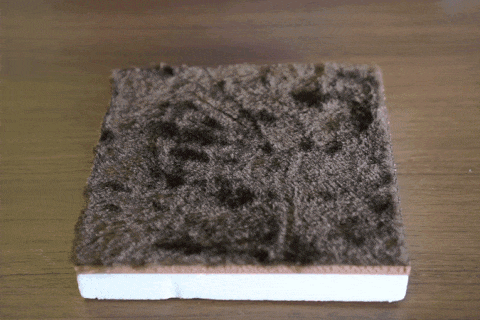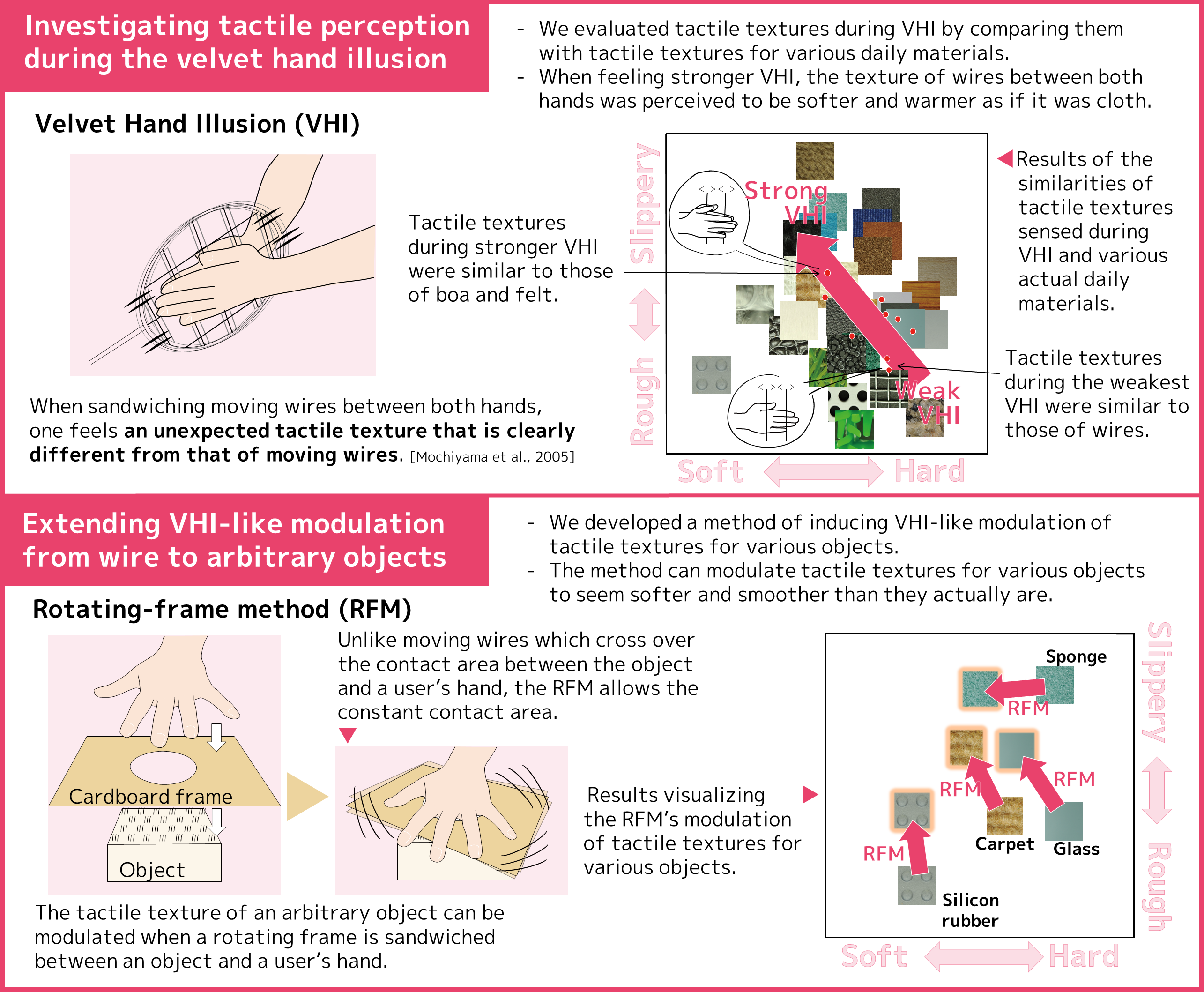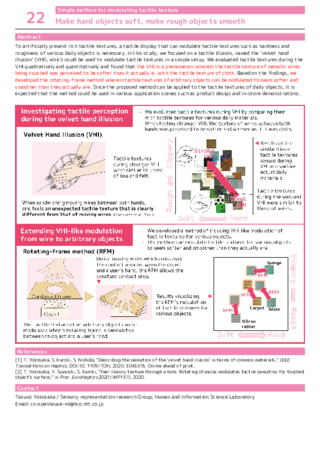| 22 |
Make hard objects soft, make rough objects smoothSimple method for modulating tactile texture 
|
|---|
To artificially present rich tactile textures, a tactile display that can modulate tactile textures such as hardness and roughness of various daily objects is necessary. In this study, we focused on a tactile illusion, named the ‘velvet hand illusion’ (VHI), which could be used to modulate tactile textures in a simple setup. We evaluated tactile textures during the VHI qualitatively and quantitatively and found that the VHI is a phenomenon wherein the tactile texture of metallic wires being touched was perceived to be softer than it actually is, with the tactile texture of cloth. Based on the findings, we developed the rotating-frame method wherein tactile textures of arbitrary objects can be modulated to seem softer and smoother than they actually are. Since the proposed method can be applied to the tactile textures of daily objects, it is expected that the method could be used in various application scenes such as product design and in-store demonstrations.

[1] T. Yokosaka, S. Kuroki, S. Nishida, “Describing the sensation of the 'velvet hand illusion' in terms of common materials,” IEEE Transactions on Haptics, DOI:10. 1109/TOH, 2020. 3046376. Online ahead of print.
[2] T. Yokosaka, Y. Suzuishi, S. Kuroki, “Feel illusory texture through a hole: Rotating stimulus modulates tactile sensation for touched object’s surface,” in Proc. EuroHaptics2020 (WIP137), 2020.
Takumi Yokosaka / Sensory representation research Group, Human and Information Science Laboratory
Email: cs-openhouse-ml@hco.ntt.co.jp


